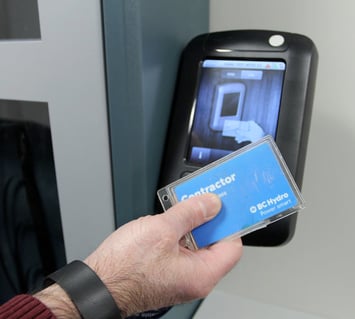By Jay Palter | June 14, 2024
In today's digital workplace, physical keys remain an essential tool in the access control toolkit due to their reliability and cost-effectiveness. However, key management can be very challenging when performed manually. There are many touchpoints where human error can introduce significant risk, such as tracking key transactions and ensuring they are returned promptly. These challenges have driven security-conscious organizations to develop complex and often cumbersome manual key control processes.
- Traditional key boxes and manual key management are out of step with the modern workplace
- Components of an electronic key management system
- Business Benefits of Electronic Key Control Systems
- How different industries use electronic key management systems
- Electronic key management systems modernize key control
But there are better methods.
Electronic key cabinets have emerged as an effective solution to these issues in manual key management. These smart technology systems automate key tracking, provide real-time monitoring, and generate detailed usage reports, improving operating efficiency and security.
This article explores the functionalities and benefits of electronic key cabinets and how they can be effectively deployed across various sectors as part of a modern physical key management program.
Traditional key boxes and manual key management are out of step with the modern workplace
Trusting manual key tracking to a single individual can sometimes make sense in smaller organizations. However, as the business grows, this method becomes inefficient and introduces significant security risks. One individual managing all the keys can create a bottleneck, and if that person is unavailable, access to keys and critical areas is hindered. And manually tracking keys adds unnecessary complexity and is not very scalable. Adding a second person to the process introduces more touchpoints where errors will appear.
Sharing access to a key safe or cabinet without proper record-keeping poses serious security vulnerabilities. Without a reliable tracking system, it's impossible to know for certain who last used a key, leading to inefficiencies and potential security breaches. Keys may need to be labeled for identification, making it easier for someone unfamiliar with the business to misuse them if they fall into the wrong hands.
Components of an electronic key management system
Trusting manual key tracking to a single individual can sometimes make sense in smaller organizations. However, as the business grows, this method becomes inefficient and introduces significant security risks. One individual managing all the keys can create a bottleneck, and if that person is unavailable, access to keys and critical areas is hindered. And manually tracking keys adds unnecessary complexity and is not very scalable. Adding a second person to the process introduces more touchpoints where errors will appear.
Key cabinets
Key cabinets are the physical security structure of a key system. Depending on the model. They can feature an outer locking door and individual lock slots for key rings. This means the system only unlocks the key ring selected and authorized for access to the requesting user. Key cabinets can come in various sizes and include just a few spaced lock slots for large key rings or many slots packed together for managing individual keys.

Smart panel
The outer locking door opens only after personnel authenticate themselves on the system’s smart panel. It is usually a touchscreen. Administrators can customize panels to use or more different authentication types, such as PIN codes, RFID fobs, swipe cards, or biometric scans like fingerprints or iris scans. Through the management portal (more on that below), you can configure the smart panel to present security and quality control checklists, requiring users to log specific information, such as mileage or maintenance notes, when returning fleet keys.

Key tracking tags
RFID tags embedded in key rings allow for real-time verification upon return. Advanced systems can distribute RFID sensors throughout high-security facilities to track keys in real time.

Management dashboard
Management software is the backbone of modern electronic key management systems. It allows you to manage alarms, reports, and personnel access from any connected PC or mobile device.

Business Benefits of Electronic Key Control Systems
Physical keys are valuable assets—not because they’re expensive to replace—most aren’t. They’re valuable because they provide access to important assets, like essential business equipment, vehicles, sensitive facilities, and personnel areas. Electronic key cabinets offer numerous benefits to achieve these goals and more.
Improved accountability
Intelligent key cabinets generate automatic transaction logs, providing continuous insight into who signed out which keys and when. They help enforce key curfews, ensuring keys are returned on time and alerting supervisors if they are not. This promotes accountability and ensures that keys are always tracked.
Enhanced and simplified operations
Reduced key loss
Losing a key incurs direct and indirect costs. While the replacement cost of a normal door key is usually low, replacing master or sub-master keys can be expensive due to the need to rekey many locks.
For indirect costs, misplaced keys can expose organizations to fines, especially in regulated sectors. Missing keys result in lost productivity, as staff spend time searching for keys and managing rekeying tasks instead of performing their usual duties.
Learn More: The High Costs of Lost Keys for Businesses and How to Avoid Them
Better risk management
Integrating key management systems with other business and security provides added advantages
How different industries use electronic key management systems
Electronic key management systems are highly adaptable technologies with applications across various industries.
Casinos operate under stringent licensing regulations, which require careful tracking of cash boxes, gaming materials, and access to machines. Electronic key system tracking eliminates the risk of human errors in key transactions, ensuring compliance and operational integrity.
In fleet management, ensuring proper access to vehicles and equipment is crucial for safety and performance. Electronic key cabinets restrict vehicle access to authorized personnel only. Fleet key management systems also handle reservation requests efficiently, which can result in significant annual savings for organizations with medium-to-large fleets.
Law enforcement agencies often rely on physical keys due to budget constraints or the need for reliable security solutions during power or network outages. Secure key storage with offline emergency release features maintain security while preserving emergency response capabilities. Additionally, in evidence management, high-security key systems provide sign-out reports that aid in maintaining the chain of custody for evidence.
Manufacturing facilities must secure their premises while ensuring easy access to work areas and equipment. Smart key control systems monitor the location of keys, ensuring they are readily available for the next user, minimizing downtime and increasing productivity.
Tracking vehicle and storage keys in distribution centers manually is cumbersome. Key control systems automate key management processes, significantly reducing the time and effort required to manage keys and enhancing control over all transactions.
In the hospitality industry, exceptional customer service includes prompt access to conference rooms, stored equipment, and other secured areas as needed. Electronic key management systems create a digital "paper trail," allowing staff to quickly locate and track keys, improving service delivery and operational efficiency.
Hospitals and healthcare facilities often use physical keys to secure pharmacies, drug dispensaries, and supply storage areas. Keeping detailed records of key sign-outs and returns enhances access control for controlled substances and ensures compliance with government regulations.
On expansive college campuses, implementing swipe cards or electronic access controls can be cost-prohibitive. Additionally, the continuous turnover of students, seasonal staff, and adjunct faculty makes maintaining accurate key access control challenging. Electronic key management systems streamline this process by enabling quick updates for new staff or student classes via a management dashboard, reducing administrative burdens.
Electronic key management systems modernize key control
Streamlining security procedures is a critical business practice, and optimizing traditional key security systems through smart key cabinets offers a good return investment. Implementing a smart key control system enhances security and provides valuable business insights that contribute to overall operational efficiency.
Get Started:
Read The Ultimate Guide to Key Control in the Workplace
Subscribe to our blog

Jay Palter
Vice President of Marketing & Partnerships




